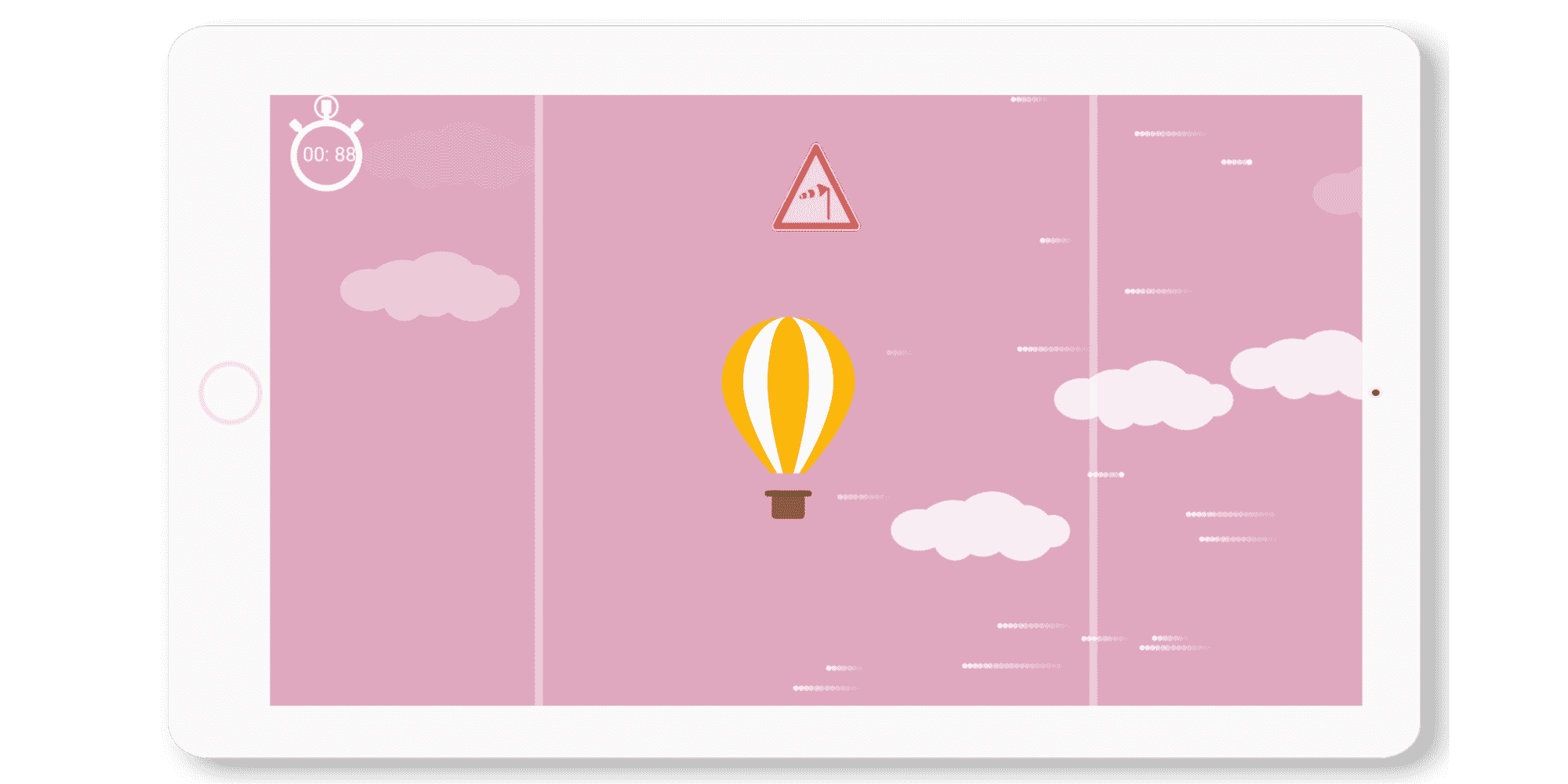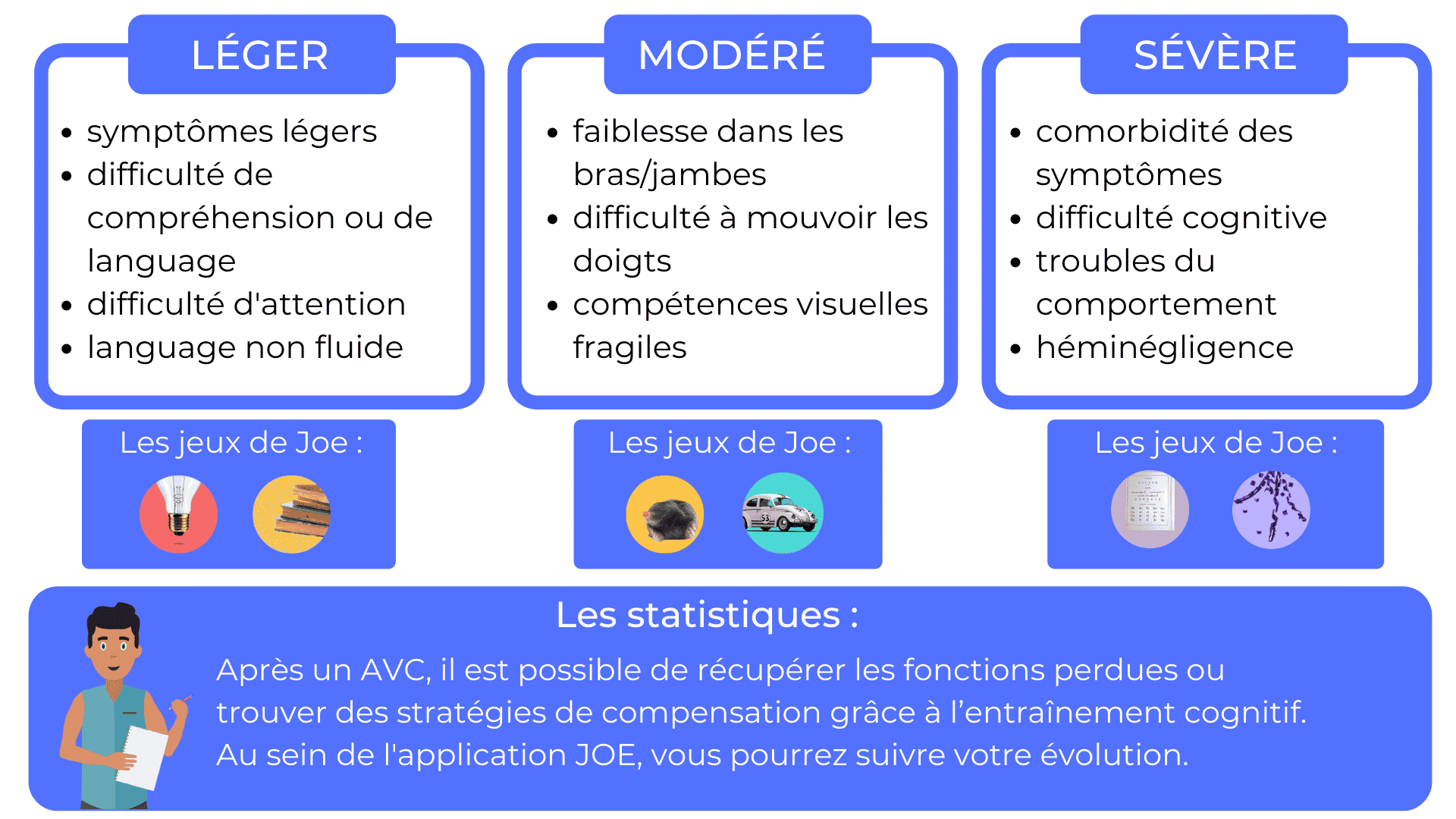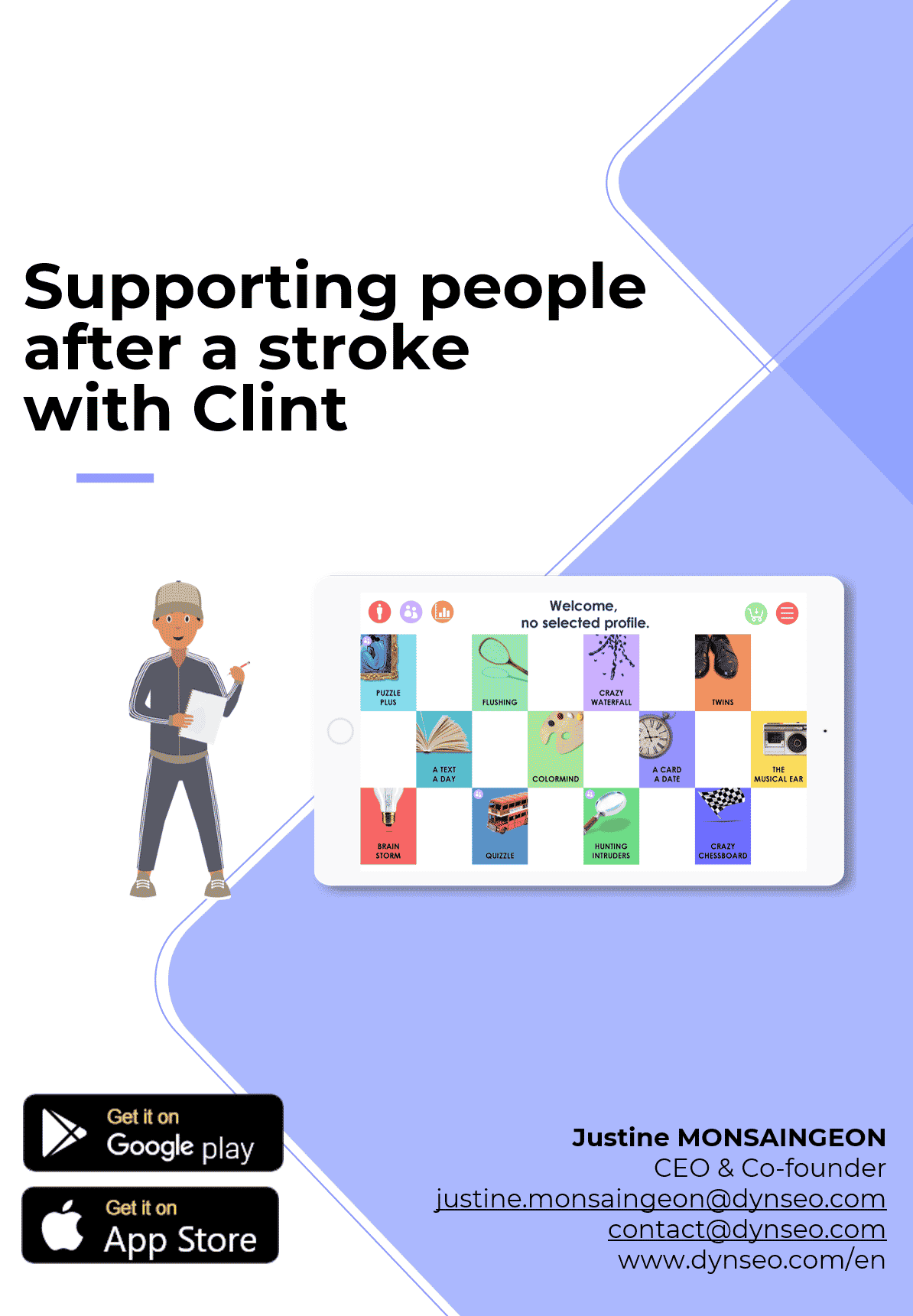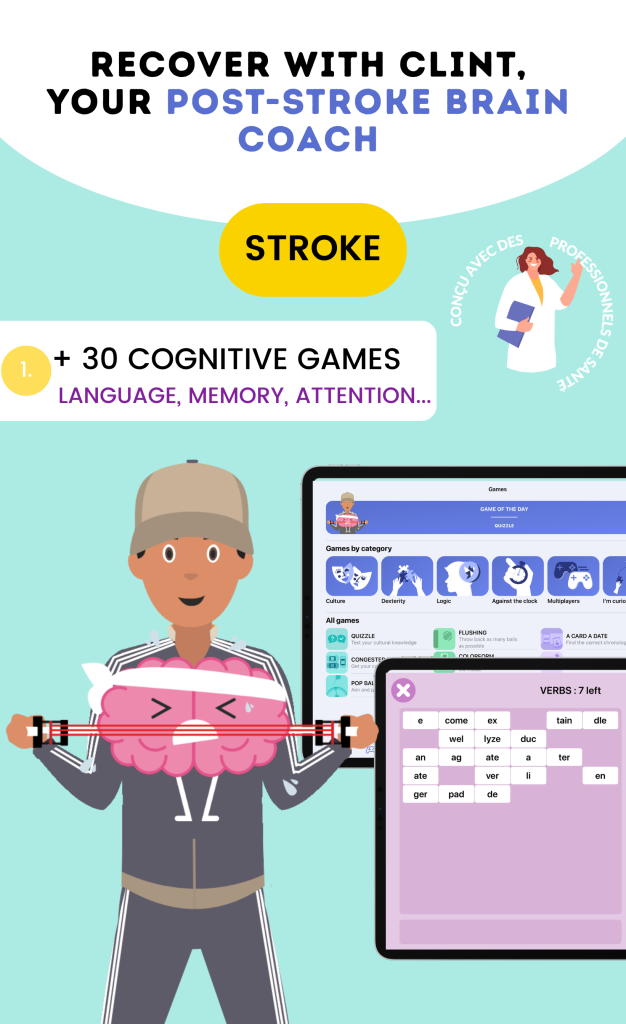Stroke or cerebrovascular accident is a very common disease that affects thousands of people each year and can leave lasting neurological damage or even lead to death. People who have survived a stroke often undergo rehabilitation to recover.
What is a Stroke?
To function properly, our brain needs oxygen as well as nutrients that are transported by the blood. Blood is delivered through the internal carotid arteries. There are two types of strokes.
- Ischemic Stroke
In an ischemic stroke, a small cerebral artery is blocked by thrombosis (blood clot). This clot forms in the heart or due to the aggregation of blood cells around a cholesterol plaque. As a result, the part of the brain that is not irrigated does not receive oxygen: there will be necrosis.
- Hemorrhagic Stroke
The hemorrhagic stroke is caused by the rupture of an intracranial artery. This can be due to age, blood pressure problems, smoking, diabetes… Following this rupture, an intracerebral hematoma will form. Additionally, the rupture could also be caused by an aneurysm. There is a malformation of the arterial wall that weakens it.
How Can a Stroke be Treated?
The treatment of a stroke varies depending on its origin.
- Ischemic Stroke
An ischemic stroke is caused by the formation of a clot in the blood. To treat it, a microcatheter is used to remove the clot. The operation is performed manually and is called thrombectomy. Additionally, there is also intravenous thrombolysis. This method involves injecting a substance into the vein that will dissolve the clot. This method presents less danger and increases the patient’s survival rate.
- Stroke Related to Hemorrhage
To treat this type of stroke, blood pressure must be carefully controlled to avoid damaging the brain. Once this is done, surgery can be performed to remove the hematoma.
- Stroke Caused by an Aneurysm
In the case of an aneurysm, surgeons perform embolization. The surgeons will block the affected cerebral artery by accessing it through the femoral artery. Additionally, there is another procedure that involves operating at the skull level to separate the artery from the rest of the circulation.
Why is Rehabilitation Necessary After a Stroke?
Rehabilitation involves applying therapeutic methods using specific instruments to improve the health and condition of the patient. Indeed, rehabilitation is essential for the patient’s recovery.
- To Recover Lost Functions
A stroke causes major damage to the patient’s nervous system, particularly the destruction of neurons. To compensate for these losses, the patient must perform rehabilitation exercises to stimulate the brain again. This will contribute to the reorganization of the remaining neural networks to replace the lost neurons. In fact, to achieve functional recovery of the brain, specific exercises are given to the patient that are repeated over a variable duration depending on the case.
- To Prevent Complications
Complications can include general paralysis, spasticity that will evolve to contract muscles, muscle pain or joint problems, as well as difficulties in performing movements of the limbs. Indeed, as soon as the patient’s condition is suitable for following rehabilitation programs, they must diligently apply themselves for their well-being.
Who are the Rehabilitation Specialists?
Rehabilitation specialists take over from surgeons. They vary according to the type of sequelae.
-
Speech Therapists
People who have communication-related problems should consult speech therapists. The application CLINT can also assist you at home on your smartphone or tablet.

-
Physiotherapists
They perform rehabilitation for stroke patients through movement. Patients must do exercises to treat joints, muscles, balance problems, and paralysis through active movements. The application Rolling Ball can allow you to perform exercises at home from your tablet.

-
Occupational Therapists
These rehabilitation specialists treat patients using manual work. They primarily treat people who have concentration issues or problems related to behavior and mental state.
It can be said that rehabilitation after a stroke is necessary to sustain the results.
Technological Advances in Post-Stroke Rehabilitation
The rehabilitation of patients who have suffered a stroke has significantly evolved thanks to new technologies. These advances improve the effectiveness of treatments and offer solutions tailored to the specific needs of patients.
- Tele-rehabilitation: Thanks to digital tools, patients can follow rehabilitation sessions remotely, making access to care easier.
- Rehabilitation Applications: Mobile applications offer personalized exercises to stimulate memory, motor skills, and other cognitive functions.
- Assistance Robots: The use of robots to help patients perform specific movements can improve their functional recovery.
- Virtual Reality: Virtual reality allows for the creation of immersive environments to help patients relearn movements in a fun and motivating setting.
The Importance of Psychological Support After a Stroke
Surviving a stroke can lead to significant psychological repercussions. It is crucial to consider the mental well-being of patients to promote their recovery.
- Emotional State: Patients may experience anxiety, depression, or mood swings after a stroke. Psychological follow-up can help them manage these emotions.
- Support Groups: Participating in support groups allows patients to share their experiences and feel less isolated in their rehabilitation journey.
- Behavioral Therapies: Approaches like cognitive-behavioral therapy can help patients develop strategies to overcome their emotional difficulties.
- Involvement of Loved Ones: Support from family and friends is essential. Loved ones should be informed about the psychological issues to better support the patient.
Nutritional Aspects in Recovery After a Stroke
A balanced diet plays a key role in recovery after a stroke. It can help reduce the risk of complications and promote healing.
- Foods Rich in Omega-3: Fatty fish, nuts, and flaxseeds are beneficial for brain health.
- Fruits and Vegetables: They provide essential vitamins and minerals that strengthen the immune system and promote recovery.
- Hydration: Good hydration is crucial for blood circulation and brain function.
- Avoid Processed Foods: Reducing the consumption of added sugars and saturated fats can contribute to better cardiovascular health.
The Impact of Physical Exercise on Post-Stroke Rehabilitation
An appropriate exercise program is essential for patients who have suffered a stroke. Physical activity contributes to functional recovery and improves quality of life.
- Muscle Strengthening: Specific exercises can help regain strength and mobility in affected limbs.
- Improvement of Balance: Physiotherapy sessions focused on balance can reduce the risk of falls.
- Aerobic Activities: Walking, swimming, or cycling can improve endurance and cardiovascular health.
- Personalized Programs: It is important that exercises are tailored to the abilities and needs of each patient to ensure their safety and effectiveness.







